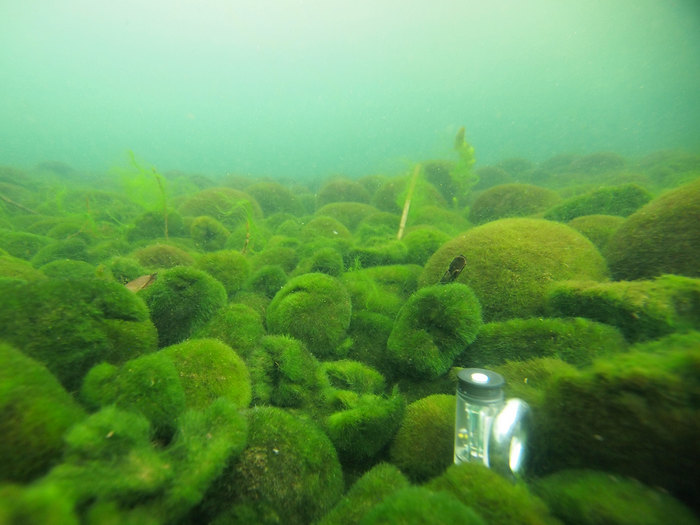Climate change threatens ‘fluffy’ algae balls with extinction
The world’s largest marimo can be found in Lake Akan in Hokkaido

The climate crisis could kill off the endangered rare underwater "marimo" algae balls by exposing them to sunlight, according to a new study at the University of Tokyo.
Marimo are living fluffy balls of green algae and the world’s largest marimo can be found in Lake Akan in Hokkaido, Japan’s northern main island.
They are sheltered from too much winter sunlight by a thick layer of ice and snow, but the ice is thinning at the site due to the climate crisis.
Researchers found that the algae could survive bright light for up to four hours and would recover if then placed under a moderate light for 30 minutes.
However, the algae died when exposed to bright light for six hours or more. The team hopes this discovery will highlight the threat of climate change to this endangered species and the urgent need to protect their habitat.
Marimo are fluffy, squishy green balls of underwater algae which have become popular with tourists, nature enthusiasts and aquarium owners. They range in size from about a pea to a basketball, and form naturally when floating strands of the algae Aegagropila linnaei are bundled together through the gentle rolling motion of lake water.
They are only found in a few countries and the largest marimo, found in Lake Akan, can grow up to 30 centimetres in diameter. In Japan, they are so popular that they have their own annual festival, merchandise and even a mascot.
However, marimo are an endangered species and globally their numbers are generally in decline.
Marimo rely on nutrients and photosynthesis to survive. Their decline is usually attributed to human intervention altering or polluting the freshwater lakes in which they live. However, there has not been much research into the effect of changing access to sunlight.
“We know that marimo can survive bright sunlight in warm summer waters, but the photosynthetic properties in marimo at low winter temperatures have not been studied, so we were fascinated by this point,” said Project Assistant Professor Masaru Kono from the Graduate School of Science at the University of Tokyo.
“We wanted to find out whether Marimo could tolerate it and how they respond to a low-temperature, high light-intensity environment.”
Kono and team visited Lake Akan’s Churui Bay in winter to measure the temperature and light intensity underwater, both with and without ice cover.
Algae strands were removed from the marimo balls and tested for their normal photosynthetic ability. They were then placed in containers in the ice under the artificial light, which was adjusted to shine at different intensities for different periods of time.
“We demonstrated a new finding that damaged cells in marimo can repair themselves even after exposure to simulated strong daylight for up to four hours at cold temperatures (2-4 degrees Celsius), when followed by moderate light exposure for just 30 minutes,” said Kono.
“This moderate light had a restorative effect which did not occur in the dark.
“However, when exposed to strong daylight for six hours or more, certain cells involved in photosynthesis were damaged and the algae died, even after being treated with moderate light.”
“These results suggest that photoinhibition (the inability to photosynthesize due to cell damage) would be a serious threat to marimo in Lake Akan, which receives more than 10 hours of sunlight a day in winter, if global warming proceeds and ice cover recedes.”
Subscribe to Independent Premium to bookmark this article
Want to bookmark your favourite articles and stories to read or reference later? Start your Independent Premium subscription today.

Join our commenting forum
Join thought-provoking conversations, follow other Independent readers and see their replies